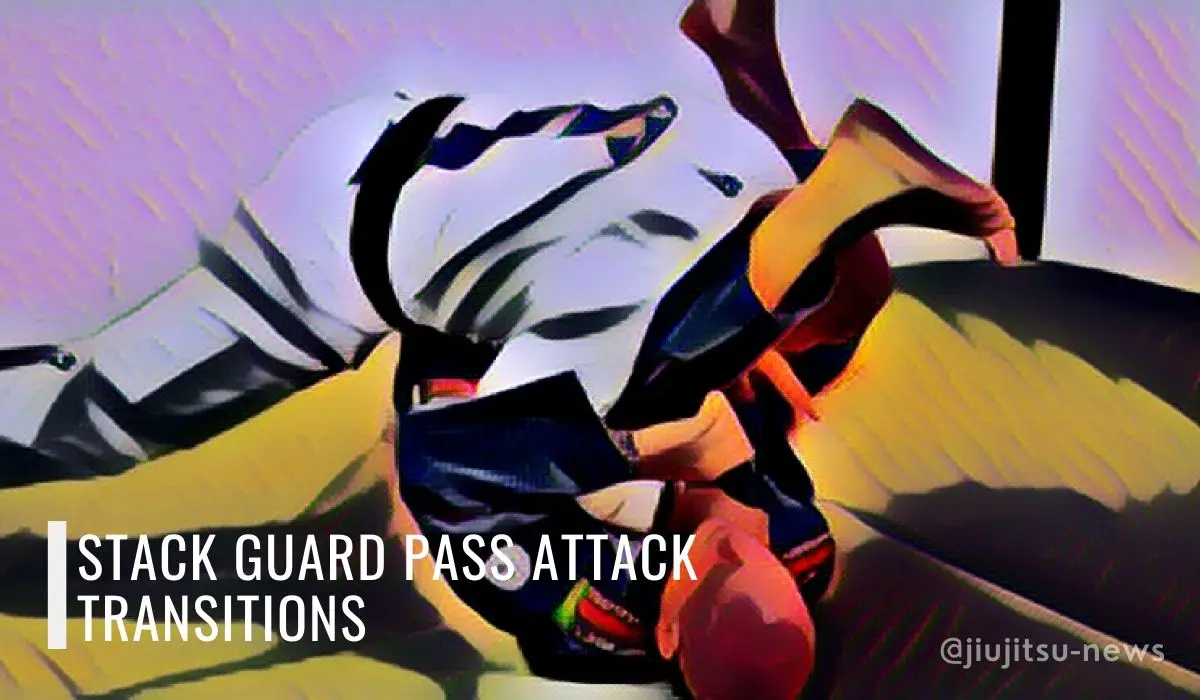Guard passing is a basic technique that students should learn and practice to improve their jiu-jitsu. It is one of the most challenging elements in BJJ grappling, particularly for novices. Thus, to succeed in sparring and tournaments, you should be well-versed in various jiu-jitsu guard passing tactics, such as the stack pass BJJ.
The stack guard pass is one of the most common pressure passes in Brazilian Jiu-Jitsu. This guard pass has been demonstrated to be effective at every level of competition available in the grappling martial arts world. Besides, it’s an unpleasant and effective method of getting past someone’s guard defenses.
The stack passing technique is available in various versions, each of which is successful. First, however, learning how to go about it correctly is essential. Therefore, this tutorial will show you how to perform the stacking guard pass correctly.
Stack Pass Concepts and Setup
Stack passing is a form of pressure passing technique used in Brazilian jiu-jitsu. In this situation, the guard passer drives the opponent’s knee toward his face, producing massive strain on his upper body. Then, the attacker spins his hip slightly to eliminate the opponent’s defenses and reach the side control position.
Aside from that, finishing the BJJ stack pass can be tricky against flexible guard players (flexible hips) since they can adjust their leg position even in a tiny space. Therefore, directing your ear toward your opponent’s hip is critical to completing the stack guard pass. In that case, the opponent will have no space to recover by utilizing their legs.
In the video below, Fabio Gurgel, a 6th-degree black belt in Brazilian jiu-jitsu, shows how to pass the stacking guard in BJJ grappling. Learn and level up your guard passing tactics.
Stack Pass from the Closed Guard
In Brazilian Jiu-Jitsu, the closed guard is one of the fundamental positions where the bottom player wraps his legs around his opponent’s torso. This defensive position gives you dominance over your opponent and allows you to sweep or get submissions.
Aside from that, the top player can use a stacking pass to break the BJJ closed guard. Then, he can pass the guard and gain a dominant position like the side control, the back mount, etc.
Mauricio Gomes, 8th-degree coral belt, demonstrates the appropriate setup for the stack passing move from the closed guard below. Otherwise, he highlights several typical mistakes to avoid to improve your jiu-jitsu guard passing approach.
Most Common Stack Pass Mistake in BJJ
In Brazilian jiu-jitsu, the stack pass is an excellent pressure passing technique—many fighters in gi and no-gi use it because of its effectiveness. However, avoid the following blunders if you want to incorporate this technique into your guard passing arsenal.
The following video discusses people’s typical problems when executing an over-under stack guard pass. Otherwise, it tells you to avoid making the same mistakes and enhance your pressure guard technique.
Stack Guard Pass Attack Transitions

Opting for other attacks may occur whenever you cannot complete the stack passing strategy because your opponent was able to counter your attempt correctly.
In that case, the BJJ stack pass position provides many attack transitions that you can use to gain the upper hand on your opponent.
Here are some fantastic transitions from the stack guard pass positions:
Stack Position to Back Take
Inverted Stacking Position to Back Take
Espen Mathiesen demonstrates one of the most successful back-take actions from an inverted stack passing guard in this video below.
This is a highly successful method of getting past the defenses of a highly flexible opponent. Still, it is also exceedingly simple to use and highly flashy to see.
Stack Pass to Leg Drag
The leg drag move is one of the most effective techniques for top BJJ athletes like Rafael Mendes. It’s an excellent approach for destroying your opponent’s defenses, passing the guard, and gaining submissions and dominance.
Rubens Charles “Cobrinha”, many times gi and no-gi world champion, demonstrates how to correctly transition from the stack passing position to the leg drag position in the following video.
Stack Passing Drills in Jiu-Jitsu
The stack pass drills are a series of exercises designed to help you learn the foundations of the stack guard passing maneuver. In addition, these moves are intended to assist you in honing your abilities to execute a stacking guard pass in the future successfully.
Professor Andre Galvao, a 4th-degree black belt, displays some excellent pass stack guard drills in the following video tutorial, which includes an extensive explanation.
Stack Pass Defense
Professor Andre Galvao demonstrates some great stack guard pass counters in the following video. Watch it now.
Conclusion
The stack pass is among the best Brazilian jiu-jitsu guard passes for devoted grappling athletes. It’s a fantastic pressure-passing method with a high success rate, either with or without the BJJ gi.
The stack guard pass technique, in addition, can be entered from a variety of postures, including the closed guard position, open guard, etc. It also necessitates lifting the opponent’s hips off the mat while using your shoulders to apply massing pressure on the opponent.
Frequently Asked Questions

What Is a Stack Pass In Jiu-Jitsu?
The stack guard pass is a valuable pressure guard passing technique in Brazilian Jiu-Jitsu. It requires elevating your opponent’s hips off the mat while applying massing pressure to the opponent with your shoulders.
How Does Pressure Guard Pass Work?
Pressure guard passes, such as the stack pass, can help you break and pass someone’s guard by applying unsupportable and uncomfortable pressure. So, By utilizing a stacking passing technique, you will put your opponent in a vulnerable position, making it easy to pass to the side control positions or take the back, etc.



